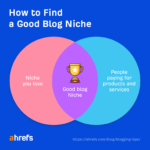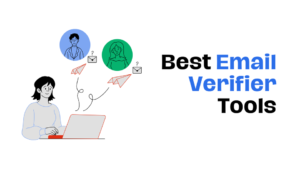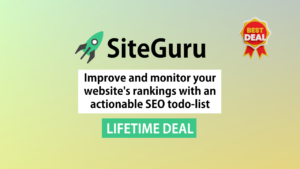Is your website not getting enough visitors? Low website traffic can be frustrating.
Many businesses struggle with this issue. It can affect sales, growth, and visibility. Understanding why your traffic is low is the first step. There could be many reasons behind it. Poor SEO, slow loading times, or irrelevant content are common causes.
In this blog post, we will explore the common reasons for low website traffic. We will also discuss practical steps to improve it. By the end, you’ll have a clear action plan to boost your website’s visitors. Let’s dive in and uncover the secrets to increasing your website traffic.

Credit: somnowellmarketing.com
Table of Contents
ToggleIdentifying Traffic Sources
Identifying the sources of your website traffic can help you understand where your visitors come from. This knowledge enables you to optimize your marketing efforts. In this section, we will discuss four main types of traffic sources: Direct Traffic, Referral Traffic, Organic Traffic, and Social Media Traffic.
Direct Traffic
Direct Traffic occurs when users type your website’s URL directly into their browser. These visitors already know about your site. They may have bookmarked it or received the URL via email. Direct traffic can indicate brand loyalty and recognition.
Referral Traffic
Referral Traffic comes from links on other websites. These visitors are redirected to your site by clicking on a link. Referral traffic can help you understand which external sites drive traffic to your page. Partnering with high-quality websites can increase your referral traffic.
| Source | Description |
|---|---|
| Blogs | Links from blog posts or articles |
| News Sites | Mentions or features in news articles |
| Forums | Links shared in forum discussions |
Organic Traffic
Organic Traffic is generated through search engines like Google. Users find your site by searching for keywords related to your content. This type of traffic is crucial for long-term growth. Implementing SEO strategies can boost your organic traffic.
Social Media Traffic
Social Media Traffic originates from social networking platforms. These visitors come from links shared on sites like Facebook, Twitter, or LinkedIn. Social media traffic reflects the effectiveness of your social media marketing efforts. Engaging content can drive more visitors from these platforms.

Credit: www.slideteam.net
Seo Optimization
Facing low website traffic? The issue might be your SEO optimization. Optimizing your site for search engines can help increase visibility. Let’s explore the key aspects of SEO that can improve your traffic.
Keyword Research
Start with keyword research. Identify the terms your audience searches for. Use tools like Google Keyword Planner or Ubersuggest. Look for keywords with high search volume and low competition. Focus on long-tail keywords. They are more specific and less competitive.
On-page Seo
On-page SEO involves optimizing individual pages. Use your keywords naturally in titles, headers, and content. Ensure every page has a unique title tag and meta description. Use internal links to guide users through your site. Add alt text to images. This improves accessibility and helps search engines understand your content.
Off-page Seo
Off-page SEO refers to activities outside your website. It includes building backlinks from reputable sites. Guest blogging is a common strategy. Share your content on social media. Engage with your audience. This builds trust and improves your site’s authority.
Technical Seo
Technical SEO focuses on your site’s backend. Ensure your site is mobile-friendly. Use a responsive design. Improve your site’s speed. A fast site ranks better. Use HTTPS to secure your site. Create an XML sitemap. It helps search engines index your site. Fix broken links. They harm user experience and SEO.
| Aspect | Focus |
|---|---|
| Keyword Research | High volume, low competition keywords |
| On-Page SEO | Titles, headers, internal links |
| Off-Page SEO | Backlinks, social engagement |
| Technical SEO | Site speed, mobile-friendliness |
By focusing on these four areas, you can improve your site’s SEO. Better SEO leads to higher traffic and more visibility for your site.
Content Marketing
Effective content marketing can boost your website traffic. By creating and sharing valuable content, you attract and engage your audience. Let’s dive into some key content marketing strategies.
Blogging
Blogging is a powerful tool to drive traffic. Regularly updated blogs keep your site fresh. Aim to write about topics relevant to your audience. Use keywords that your audience searches for. This helps search engines find your content.
- Write engaging headlines.
- Use subheadings to break up text.
- Include internal and external links.
- Encourage comments and shares.
Guest Posting
Guest posting on other blogs can expand your reach. Find blogs that are relevant to your niche. Write high-quality posts for them. Include a link back to your site. This drives new visitors to your website.
| Benefits | Actions |
|---|---|
| Increase visibility | Find popular blogs in your niche. |
| Build backlinks | Include links to your site in posts. |
| Gain credibility | Write high-quality, informative content. |
Video Content
Video content is very engaging. Many users prefer watching videos over reading text. Create videos that provide value to your audience. Share them on your website and social media channels. Use descriptive titles and tags to help users find your videos.
- Plan your content.
- Keep videos short and to the point.
- Use high-quality visuals and sound.
- Include a call-to-action at the end.
Infographics
Infographics are a great way to present information visually. They are easy to share and understand. Create infographics that are relevant to your audience. Include data and statistics that are interesting and informative. Share them on your blog and social media channels. Infographics can drive a lot of traffic to your site.
- Use attractive colors and designs.
- Include your website link in the infographic.
- Promote your infographic on social media.
- Encourage others to share it.
Social Media Strategy
A strong social media strategy can boost your website traffic. Understanding key elements is essential. This includes platform selection, content planning, and user engagement. Here’s how you can improve your social media strategy.
Platform Selection
Choosing the right platforms is crucial. Not every platform suits every business. Focus on where your audience spends time. For example:
- Facebook: Great for broad audiences.
- Instagram: Ideal for visual content.
- LinkedIn: Best for B2B marketing.
- Twitter: Good for quick updates and news.
Content Calendar
Consistency is key in social media. A content calendar helps maintain regular posts. Plan your content weekly or monthly. Include:
- Post Types: Blog links, images, videos.
- Post Times: Best times for your audience.
- Special Events: Holidays, product launches.
Engagement Tactics
Engage with your audience actively. Reply to comments and messages promptly. Use these tactics:
- Polls and Questions: Encourage interaction.
- User-Generated Content: Share content from your followers.
- Live Sessions: Host Q&A or tutorials.
Paid Advertising
Paid ads can drive targeted traffic. They offer quick results and measurable ROI. Consider these ad types:
| Platform | Ad Type | Purpose |
|---|---|---|
| Boosted Posts | Increase post reach | |
| Story Ads | Engage with visual content | |
| Sponsored Content | Reach professionals | |
| Promoted Tweets | Increase tweet visibility |
Email Marketing
Email marketing is a powerful tool to increase your website traffic. It allows you to connect directly with your audience. This strategy can be very effective if done right. Let’s explore some key components of email marketing.
List Building
Building a quality email list is crucial. A good list ensures that your emails reach interested people. Use sign-up forms on your website. Offer something valuable in return, like a free ebook or discount. This encourages visitors to join your list.
Newsletter Content
Your newsletter content should be engaging and relevant. Share useful information, updates, or special offers. Keep your content short and sweet. Use clear and simple language. Always include a clear call-to-action (CTA). This can be a link to your blog or a special offer.
Automated Campaigns
Automated campaigns save you time and ensure consistency. Set up welcome emails for new subscribers. You can also automate follow-up emails. These keep your audience engaged over time. Use tools like Mailchimp or Constant Contact for this purpose.
Segmentation
Segmentation helps you target specific groups within your list. Group your subscribers based on their interests or behavior. Send tailored content to each segment. This increases the chances of engagement. For example, if someone clicks a link about SEO, send them more SEO tips.

Credit: internetdevels.com
Ppc Advertising
Struggling with low website traffic? PPC advertising can help. PPC stands for Pay-Per-Click. It’s a method where advertisers pay each time their ad is clicked. This strategy quickly drives traffic to your site. Let’s explore key PPC advertising methods.
Google Ads
Google Ads is the most popular PPC platform. It allows businesses to create ads that appear on Google search results and other Google properties. You can target specific keywords to reach potential customers. This ensures your ads reach the right audience. Google Ads offers various formats like text, image, and video ads.
Social Media Ads
Social media platforms also offer PPC advertising. Facebook, Instagram, Twitter, and LinkedIn provide targeted advertising options. You can target users based on demographics, interests, and behaviors. This precision helps you reach a highly engaged audience. Social media ads can include images, videos, and carousel formats.
Retargeting
Retargeting is a powerful PPC strategy. It targets users who have visited your website but did not convert. Retargeting ads follow them across the web. This keeps your brand top-of-mind. Retargeting can increase the chances of conversion. It’s a great way to re-engage potential customers.
Budget Management
Effective budget management is crucial for PPC success. Start by setting a daily or monthly budget. Monitor your ad spend regularly. Adjust bids based on performance. Focus on high-performing keywords and ads. Use tools like Google’s Keyword Planner. This helps you find cost-effective keywords. Keep experimenting and optimizing to get the best results.
Analyzing Website Performance
Understanding your website’s performance is crucial for addressing low traffic issues. Analyzing various aspects of your site helps pinpoint problems and identify areas for improvement. In this section, we will explore different tools and methods for evaluating your website’s performance.
Google Analytics
Google Analytics is an essential tool for tracking website performance. It provides detailed insights into your site’s traffic and user behavior. Key metrics to monitor include:
- Pageviews: The total number of pages viewed.
- Sessions: The number of visits to your site.
- Bounce Rate: The percentage of visitors who leave after viewing one page.
- Average Session Duration: How long visitors stay on your site.
Use these metrics to understand how users interact with your site. Identify pages that perform well and those that need improvement.
Heatmaps
Heatmaps provide a visual representation of user interactions on your site. They show where users click, scroll, and spend the most time. This information helps you understand what attracts users’ attention.
Key types of heatmaps:
- Click Heatmaps: Show where users click on a page.
- Scroll Heatmaps: Indicate how far users scroll down a page.
- Move Heatmaps: Track cursor movements to see where users hover.
Analyze heatmaps to identify popular sections and optimize underperforming areas.
User Behavior
Understanding user behavior is crucial for improving website performance. Tools like session recordings and user surveys provide insights into how visitors navigate your site.
- Session Recordings: Watch recordings of user sessions to see how they interact with your site.
- User Surveys: Collect feedback directly from users about their experience.
Analyze this data to identify pain points and improve user experience.
Conversion Tracking
Conversion tracking helps measure the effectiveness of your website in achieving its goals. This involves tracking actions like form submissions, product purchases, and newsletter sign-ups.
Important conversion metrics:
- Conversion Rate: The percentage of visitors who complete a desired action.
- Goal Completions: The total number of completed goals.
- Revenue: The total income generated from conversions.
Use this data to evaluate the success of your website and identify areas for improvement.
Improving User Experience
One effective way to boost website traffic is by improving user experience. A smooth and pleasant experience encourages visitors to stay longer and return. This can lead to increased engagement and higher search engine rankings. Let’s explore key areas to focus on to enhance user experience. When aiming to improve user experience, it is important to focus on website speed, mobile responsiveness, and intuitive navigation. These are proven strategies for boosting website traffic and keeping visitors engaged. By ensuring that these aspects are optimized, businesses can attract more visitors and ultimately increase their online presence. Furthermore, providing valuable and relevant content is vital in enhancing user experience. High-quality content that meets the needs of visitors can increase engagement and encourage them to explore the website further. Additionally, utilizing social media and email marketing are proven traffic generation strategies that can help drive more traffic to the website. By incorporating these tactics along with improving user experience, businesses can effectively boost their online traffic and reach a wider audience.
Site Speed
Site speed is crucial. A slow-loading website can drive users away. Ensure your pages load quickly.
- Compress images to reduce their size.
- Use a reliable hosting service.
- Enable browser caching.
Fast sites keep users happy and improve search rankings.
Mobile Optimization
More people browse the web on mobile devices. Ensure your site is mobile-friendly.
| Aspect | Tips |
|---|---|
| Responsive Design | Use flexible layouts that adjust to any screen size. |
| Font Size | Ensure text is readable on small screens. |
| Touch Elements | Make buttons and links easy to tap. |
Mobile optimization can significantly enhance user experience.
Navigation
Clear navigation helps users find what they need quickly. Use a simple and intuitive menu.
- Organize content into logical categories.
- Keep menu items to a minimum.
- Ensure the search function is easy to find.
Good navigation reduces bounce rates and increases engagement.
Content Readability
Make your content easy to read and understand. Use short paragraphs and simple sentences.
- Use bullet points for lists.
- Highlight important keywords in bold.
- Use headers to break up content.
Readable content keeps users engaged and encourages them to explore further.
What Are Some Proven Strategies to Boost Website Traffic?
Looking for ways to increase your website’s visibility? Utilize proven boost website traffic tips today by optimizing your website for search engines, creating compelling content, utilizing social media, and engaging with your audience through email marketing. Implement these strategies and watch your website traffic soar. For additional organic visibility solutions today, consider leveraging the power of guest blogging on relevant industry websites and partnering with other businesses for cross-promotion. By combining these strategies with the tips mentioned earlier, you can create a comprehensive approach to driving traffic to your website and increasing your online presence. With a well-rounded strategy in place, you can attract more visitors and ultimately convert them into loyal customers. Boost your website’s visibility and reach your online goals with these effective techniques.
Are the Strategies for Traffic Generation in Both Articles Effective for Boosting Website Visitors?
Looking to boost website visitors with proven strategies? Both articles provide effective traffic generation strategies, including SEO optimization, social media marketing, and content creation. These proven methods can help increase website traffic and visibility, ultimately driving more visitors to your site.
Frequently Asked Questions
Why Is My Website Traffic Low?
Low website traffic can result from poor SEO, slow loading times, or irrelevant content. Review your site’s performance and optimize accordingly.
How Can I Increase Website Traffic?
To increase traffic, focus on SEO, create quality content, and utilize social media. Engage with your audience regularly.
Does Content Quality Affect Website Traffic?
Yes, high-quality content attracts more visitors. Ensure your content is engaging, valuable, and regularly updated to retain interest.
How Does Seo Improve Website Traffic?
SEO improves traffic by enhancing visibility on search engines. Use relevant keywords, optimize meta tags, and create quality backlinks.
Are the Strategies for Boosting Blog Success the Same as Those for Increasing Website Traffic?
When it comes to increasing website traffic and boosting blogging success, the strategies may differ. While SEO, content quality, and social media presence are crucial for both, blogging success strategies proven to be effective often involve more niche-specific content, audience engagement, and personalized branding to create a loyal following.
Conclusion
Boosting website traffic takes effort and patience. Focus on quality content. Use SEO best practices. Engage with your audience. Analyze traffic sources. Adapt strategies based on results. Regular updates keep visitors returning. Stay consistent and watch your traffic grow. Small changes can make a big difference.
Keep experimenting and learning. Your website will thrive with the right approach.







